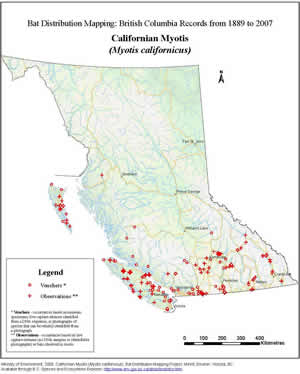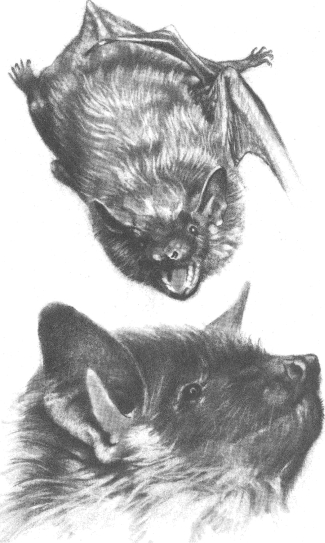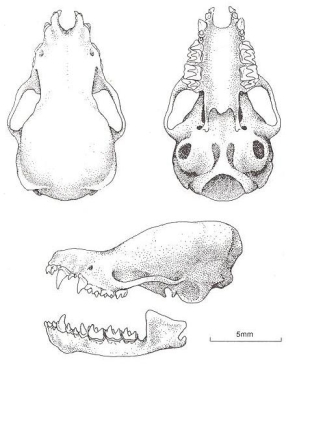Mating occurs in autumn; females produce a single young. The breeding biology of this bat in British Columbia is poorly documented. There are records of pregnant females in the interior from 11 June to 26 June and on Saltspring Island on 6 June, suggesting that young are born in late June or early July.
|
Studies in the Okanagan Valley revealed that the California Myotis emerges shortly after dusk. There are two peaks in hunting activity: between 10:00 and 11:00 pm and between 1:00 and 2:00 am. It hunts mostly over lakes near the surface, although this species will forage in the tree canopy, especially in poplar groves. In the Okanagan, the diet is predominately caddisflies, with moths, flies and beetles minor food items. Food habits in other parts of the province have not been studied.
|
This species uses rock crevices, tree cavities, spaces under the bark of trees, mine tunnels, buildings and bridges for summer day roosts. Small maternity colonies have been found in similar locations. This bat is particularly flexible in its choice of night roosts and it will use almost any natural or man-made shelter. Males live separately from females in summer and often appear to change their roosting locations.
There are several winter records for the coast, from Vancouver Island and in the Vancouver area. One Vancouver record was of an individual flying inside a building in January at the University of British Columbia. Insect remains were present in its stomach suggesting that it had recently fed. In coastal Washington and Oregon, where the California Myotis frequently hibernates in buildings, there is considerable evidence that it occasionally emerges from torpor to feed. No hibernating colonies have been recorded in the interior of the province, but there are winter museum specimens from Hope (January), Okanagan Landing (March) and Rogers Pass, Glacier National Park (January).
|
|


